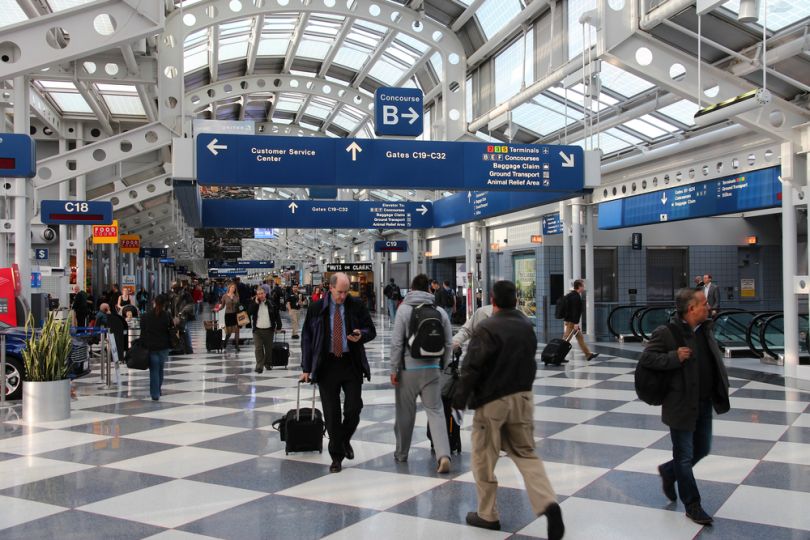If you’ve traveled or ordered from a restaurant since March 2020, you have likely noticed some tech-driven changes to your experiences.
Maybe you took a virtual reality tour of a destination before booking a trip. Perhaps you spotted a sanitation robot cleaning rooms at a hotel you stayed in. Or maybe you ordered takeout via an app from a restaurant that never offered either before.
Technology is changing the way the hospitality sector operates. Some changes were induced by the effects of the ongoing coronavirus pandemic while other adoptions made waves well before 2020 — either way, these fields keep evolving. And companies that once specialized exclusively in travel, hotel accommodations or food are now being increasingly seen as tech companies because of their innovations.
Digitization and the adoption of advanced technologies are growing more widespread across the industry and these changes are having a significant impact on hospitality recruitment. Since these companies are taking a more tech-first approach to their businesses, they need more tech talent to power their operations.
Below, we’ll take a look at the current state of hospitality across its three major sectors. Then we’ll dive into examples of each area doubling down on technology and how those effects are swaying recruitment.
Need tech talent? This free guide gives hospitality leaders the insights they need to start attracting tech talent today.
The Current State of Hospitality
For much of 2021, leisure and business travel has been on the upswing and trends are set to continue in 2022. Due to vaccination availability and efficacy, as well as loosened travel restrictions throughout much of 2021, almost three-quarters of travelers said they felt comfortable traveling. In fact, 86 percent of travelers have taken a domestic leisure trip since the pandemic started and 42 percent have traveled internationally.
Business travel is rebounding as well and spending rose 14 percent in 2021 to $754 billion. Analysts expect a 38 percent surge in business travel in 2022 and for the market to make a full recovery (hitting pre-pandemic levels) by 2024. In fact, 81 percent of business travelers said they will take more trips in 2022 than they did before the pandemic.
All those travelers need somewhere to stay at their destinations and U.S. hotels are expected to achieve 54 percent annual occupancy rates for the year, earning almost 42 percent more revenue in 2021 compared to 2020. Overall, hotel stays and air travel are on the rise but the emergence of Covid-19 variants like Delta and Omicron will continue to play a role in the sectors’ momentum in 2022.
In the food sector, sales in the restaurant and service industry are projected to rise almost 20 percent by the end of 2021 to $789 billion. Additionally, there’s been a 14 percent increase in consumers ordering takeout and food delivery since March 2020. And 71 percent of consumers said they will continue to order takeout as much or more than they did during the pandemic when the situation is over. Similarly, food delivery app users are expected to grow from 36 million in 2019 to almost 54 million by 2023.
The meal-kit industry has also flourished over the last few years and almost doubled in size to $2.4 billion between 2017 and 2020. That market segment is expected to be worth nearly $5 billion in 2025.

Let’s Get Digital
As the various sectors of the hospitality industry stabilize to pre-pandemic levels — or grow beyond them — businesses continue to invest in technology that advances their operations and meets customer demand.
Many larger companies across all sectors of the industry are now using big data and AI to streamline their backend processes and get more nuanced insights on aspects of their businesses like profitability trends, occupancy/diner rates and more.
A more physical example comes in the form of disinfecting robots. Airports, hotels, train stations, convention centers, cruise ships and other hospitality businesses are currently utilizing robots to sanitize some spaces. These bots, like Vi-YO-Let at YOTEL Boston, often come fitted with an array of UV lights that kill 99 percent of viruses and bacteria, including the coronavirus. They’re also programmed to run autonomously through a building or ship’s floor plan.
But they’re not the only robots taking over. There are robotic butlers in a California Aloft Hotel, robot waiters that serve food and drinks in Japan and customizable robotic bartenders that can make 120 drinks an hour. Robots are also being used in airports to detect concealed weapons and speed up pre-screening.
Digitization is evolving operations for airline pilots as well. Some planes now have augmented flight displays on their windshields that show real-time speed and navigation information. Other planes have LED- or laser-based projectors that can tap into 3D databases to show synthetic images of the ground in total darkness or poor weather, which reduces disruptions in flight schedules. Airlines are also investing in cockpit flight decks that feature customizable touchscreens and AI-enabled flight management systems.
Driven by safety concerns, contactless technology is another big point of investment for airlines as they evolve services and apps around checking-in, boarding, ordering food, providing real-time trip updates and more. Contactless and app-driven conveniences are a priority for food service businesses too. Since the pandemic, restaurants large and small nationwide built or bought digital services for: new branded apps, loyalty programs, online ordering portals, contactless order pick up, data collection for historical ordering, delivery management and more.
Burger King is currently using an AI system called “Deep Flame” on its digital drive-through menus. The system suggests items to drivers based on factors like the weather (iced coffee on a warm afternoon) or foods that are selling fast that day. Burger King’s parent company Restaurant Brands International (which also owns Tim Hortons and Popeyes) plans to have predictive personalized systems in more than 10,000 North American locations by mid-2022.
Lastly, many hotels went tech-first by adopting emergent technology like voice search, virtual reality (VR), biometric recognition and more. Travelers are using voice technology to book rooms at increasing rates and once they arrive, they can use their voices and IoT to control lighting and heating in their room or get tourist information without calling the front desk. VR now allows travelers to tour the hotel (or even the cities they plan to visit) ahead of their stay. And biometric recognition is being used in some hotels to allow room access and semi-contactless check-outs (or fully contactless with facial recognition.)

How Digitization is Affecting Recruitment
However, the pandemic’s effect on the industry isn’t without its bad news. There’s a labor shortage occurring across every sector of hospitality.
In September 2021, just over three quarters of restaurant operators said they didn’t have the staff to support existing customer demand with the unemployment rate for restaurant jobs at almost 8 percent. What’s more, 58 percent of current hospitality workers said they were planning to quit their jobs before the end of 2021.
The unemployment rate for hotel jobs is just as high as restaurant positions and many hotels have had to scale services back as a result. Both sectors are expected to be short 500,000 employees by the end of 2021. Within air travel, demand for positions like ticket counter and gate agents, baggage handlers, aircraft fuelers, cabin cleaners and other entry-level positions are highest. And the five largest U.S. carriers are expected to hire around 23,000 employees across 2021 and 2022.
Technology and the increasing levels of digitization across hospitality are not responsible for all these job losses. Much of these job vacancies can be attributed to workers leaving for better wages and opportunities elsewhere (the Great Resignation) as well as businesses downsizing or closing due to the economic effects of the pandemic.
However, a boost of technology in these industries can play role in boosting hospitality recruitment. Better technology infrastructures on the frontend (like automation-based tools) and backend (better internal systems, for example) of hospitality jobs mean roles that were more demanding previously could get easier. Additionally, apps need to be built. Big data needs to be organized and analyzed. Online ordering will need more technical support. Robots need troubleshooting and maintenance. And the more in-house help that hospitality companies have to address these areas, the better.
Using the restaurant sector as an example, one survey found that 70 percent of restaurant chains want to increase their investments in mobile ordering. On the consumer front, roughly 50 percent said they would consider driverless or drone food delivery as well as ordering from a partially or fully automated kitchen.
Efforts like these demand tech talent. And as of this writing, major companies across the travel, food and hotel sectors are hiring skilled technical experts like data and engineering specialists in droves alongside their entry-level positions. But with the unemployment rate for tech jobs at less than two percent, the competition is tough and it's showing no signs of easing up. So hospitality recruiters have a difficult task ahead of them. They must compete for specialized talent against organizations that built their businesses off of advanced technology, like SaaS, fintech, IoT and other companies.
Need tech talent? This free guide gives hospitality leaders the insights they need to start attracting tech talent today.
If hospitality companies and recruiters want to attract talent and meet the projected stabilization of their sectors, they need to exhaust every resource to make their businesses appealing to techies. They have to look inward at their projects, branding, perks, culture and almost every aspect of their business and ask, “Will this attract the tech professionals we need? Can we compete with traditional tech companies for talent with this?” If not, it might be time for some housekeeping.




